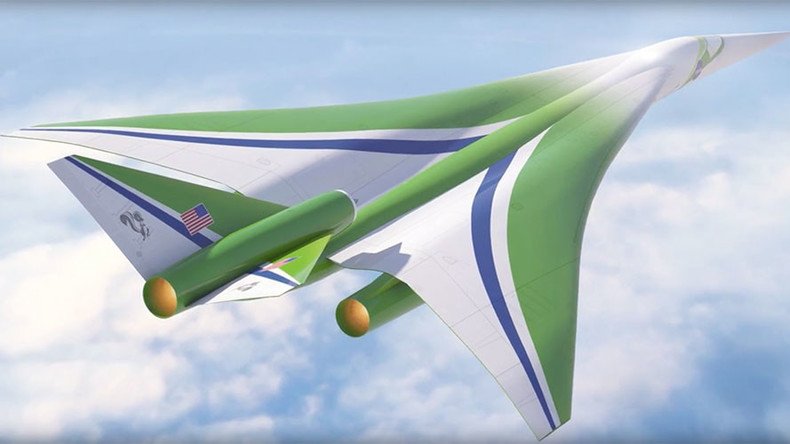NASA seeks to revive supersonic air travel with quiet passenger jet initiative

Supersonic commercial flights may become a reality again as NASA has tasked Lockheed Martin with developing a preliminary design of a “low boom” aircraft that will not produce the notorious noise pollution at a cruise velocity exceeding the speed of sound.
Lockheed Martin will receive about $20 million over 17 months to come up with a viable option for Quiet Supersonic Technology (QueSST) aimed at introducing commercial aircraft that can reach supersonic speeds with a soft thump rather than disruptive noisy boom unavoidable with the modern technology.
“NASA is working hard to make flight greener, safer and quieter – all while developing aircraft that travel faster, and building an aviation system that operates more efficiently,” said NASA 's administrator Charles Bolden, adding that the US is seeking to create a “quieter supersonic jet with an aim toward passenger flight.”
The contract awarded to the aerospace company is the first in a series of “X-planes” New Aviation Horizons initiative which seeks to reduce noise levels to acceptable levels when the aircraft is traveling at a supersonic cruise velocity. At an altitude of 35,000 feet (10,668 km) the speed of sound is about 660 miles per hour (1,063 km/h).
Our efficient & environmentally friendly X-planes will be 'seriously cool' https://t.co/BIH8AMTgM7 via @FastCompanypic.twitter.com/oHhU2yavhB
— NASA (@NASA) February 29, 2016
The world’s only passenger aircraft that flew at supersonic speeds were the Soviet Tu-144 and the Anglo-French Concorde which reached velocity of more than twice the speed of sound. The Concorde flew people between London and New York in less than 3 1/2 hours, while the Tu-144 was briefly deployed on a commercial route between Moscow and Alma-ata. Both models saw less than two dozen aircraft produced and were retired at the turn of the century.
Now NASA is seeking to improve on the old and inefficient technology and has allocated a hefty sum towards the Commercial Supersonic Technology Project as part of its Fiscal Year 2017 budget.
The main issue the US engineers are trying to overcome is a sonic boom – a loud noise like thunder a person on the ground hears when an aircraft flies overhead at supersonic speeds. However besides reducing the noise, NASA is also seeking to reduce fuel usage and emissions through a slick new design of the new plane, that will depart from the “conventional tube-and-wing aircraft shape.”
The New Aviation Horizons, according to NASA, is envisioned to last at least a decade with first aircraft flight test planned to be conducted around 2020, depending on funding.












